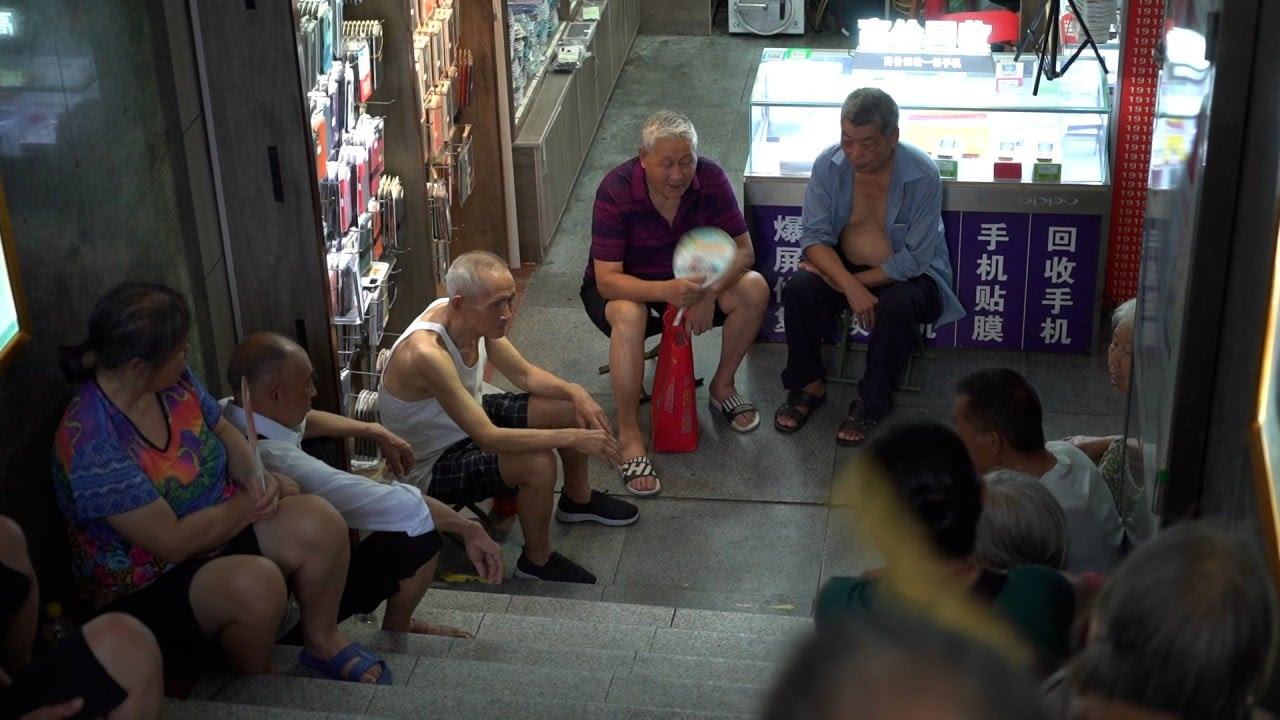~~ recommended by emil karpo ~~
21Illustration: Henry WongAs harvest season approached at the end of August, Zhou Peifang – not her real name – grew increasingly desperate.
Zhou, 42, is a single mother of two whose household includes her elderly parents, who are farmers in the mountainous area of Bazhong in China’s Sichuan province.
A severe drought has killed almost any hope of a good harvest – whether it is rice, corn, sweet potato or soybean.
“It’s not only a problem of future income. I’m worried about tomorrow. We’re also running out of vegetables,” said Zhou, who earns 2,000 yuan (US$290) per month as a kindergarten teacher.
“I know my family is relatively poor … but I didn’t expect a drought could impact us so badly.”
Zhou and her family are among more than two million people affected by the summer heatwave – China’s most severe in six decades – on top of the drought which had already hit food and factory production, power supplies and transport across a vast swathe of the country.
The worst affected area is the Yangtze River Basin, which stretches from Shanghai on the coast to Sichuan in the southwest.
The extreme weather threatens to undo China’s success in lifting nearly 800 million people out of poverty over the past four decades – 75 per cent of global progress in that time – an achievement hailed by state media as “unseen in human history” when announced last year.
The poverty eradication campaign is an important legacy of the ruling Communist Party and President Xi Jinping, who is expected to secure a third term at the five-yearly national congress in mid-October.
The drive to build a “moderately prosperous society” by 2021 – defined as eliminating absolute poverty and doubling per capita income from its 2010 level – was one of two centenary goals set by the party as part of Xi’s plans to achieve the “Chinese dream”.
At the party congress, China’s leaders are expected to develop strategies and road maps for the next five years to lead the country to “common prosperity” – a key component of the second goal, to become a “great modern socialist country” by 2049.
Xi has said common prosperity – a material and cultural affluence that is shared by all, rather than the few – concerns people’s happiness, and is the basis of the long-term rule of the party.
A parched section of the Yangtze River in Wuhan in China’s central Hubei province. Photo: AFP“We will focus on the problem of unbalanced and inadequate development and work out new solutions, new measures,” Xi told ministers and provincial party chiefs in July at a study session to lay the ground for the party congress.
But some experts warn that natural disasters, on top of the disruptions to the economy and people’s livelihoods caused by the pandemic, may have plunged many back into penury.
“There is a big cloud hanging over whatever the government chose as its poverty reduction progress,” said George Magnus, a research associate at Oxford University’s China Centre.
“The proximate signs can be seen in higher unemployment, job cutbacks and reduced hiring. So far, China has been spared significantly higher inflation – which is guaranteed to make people feel poorer – but mostly because demand is so weak, which is also about relative poverty,” he said.
While the effects of drought are yet to be fully evaluated, China’s economy grew by just 0.4 per cent in the second quarter, compared with a year earlier, the lowest growth rate since the first quarter of 2020, after large parts of the country were shut down by the pandemic.
The UBS China Consumption & Service Index dropped by 3 per cent last month from a year earlier, after declining by 15 per cent year on year in July.
The National Bureau of Statistics said the urban surveyed jobless rate remained elevated at 5.4 per cent in July, lower than the official target of 5.5 per cent for this year.
First Covid, now historic heatwave hits farmers in southwest China hard
However, the official figures do not include migrant workers – the roughly 280 million labourers who travel from rural areas to the cities to work in sectors such as manufacturing and construction – who are believed to have been hardest hit.
Some light was shed on their predicament earlier this year, when Premier Li Keqiang announced the government would distribute living allowances to unemployed migrant workers.
China’s poverty threshold is set at a per capita annual income of 4,000 yuan (US$620), or US$1.69 per day – less than the World Bank’s US$1.90 and well below the US$5.50 per day it recommends for upper-middle income countries.
The government has defended its lower threshold by saying China’s poverty alleviation includes compulsory education, basic medical care, housing and safe drinking water.
“Poverty elimination is a key benchmark of success for the [Communist Party], but the party has set itself a very low threshold. On this basis, China’s poverty is still a considerable way from being eradicated. With comparable money GDP, the US poverty line is US$35.28 a day,” Magnus said.
Since 2012 when Xi took the helm, the government has spent more than 1.6 trillion yuan (US$248 billion) on poverty alleviation, with local officials going door to door identifying impoverished households and delivering help ranging from loans to farm animals.
Zhou said her family had seen real benefits from the anti-poverty drive, with the digging of new wells to make life more convenient and coverage for the children and her parents under the rural minimum living standard security system.
“Thanks to the poverty eradication programme, our life is better. But there’s a long way to being well off. We are so vulnerable once there’s a disaster or something bad happens,” she said.
The government admits there is a problem in the vast rural areas, where farmers earn less than half of city dwellers’ average annual incomes.
In June, the National Rural Revitalisation Administration said it had helped 70 per cent of the poverty-stricken households it monitors to “eliminate the risk of falling back into poverty”.
Measures included making employers retain them, providing infrastructure construction jobs, and extending small loans. However, no details were given of the remaining 30 per cent of people in difficulty.
Chen Daoyin, an independent political scientist and former Shanghai-based professor, said the official narrative may acknowledge individual cases of “falling into poverty” but it would be impossible to depict it as a common social phenomenon.
“Premier Li Keqiang once said 600 million of Chinese people live on less than 1,000 yuan (US$143) a month, which is an unusual impromptu [remark]. Anyway, they are not counted as ‘poverty population’ under China’s definition,” Chen said.
Li made the remark at a press conference in 2020, revealing that more than 40 per cent of China’s 1.4 billion population live on less than US$5 a day, many of them without pension or medical insurance.
04:09
China’s historical heatwave bakes Sichuan province, slows hydropower stations
China’s historical heatwave bakes Sichuan province, slows hydropower stations
Chen said the party was expected to perpetuate the narrative that poverty was over to underpin its legitimacy, without recognising the setbacks.
“[Poverty eradication] will be hailed as a magnificent feat, almost parallel to the establishment of the People’s Republic of China in 1949.”
Chen said the focus would shift to “common prosperity” with wealth redistribution a key part in the next five years.
“Papers of the party congress are likely to provide details of what policy measures are to be taken [under the common prosperity push], except for the mention of general principles and guidelines,” Chen said.
“Anyway, farmers and rural areas will be the key areas to address under the common prosperity drive. A widening wealth gap between rich and poor, urban dwellers and rural residents, could threaten social stability and undermine the ruling base of the Communist Party.”
Last year, urban residents’ disposable income was on average 47,412 yuan (US$6,480), compared to 18,931 yuan (US$2,732) in the countryside, official data showed.
China’s income gap was only narrowly behind the US in 2020, and much higher than Japan, South Korea and most of Europe, according to central government statistics.
The Gini coefficient –a zero to one measure of income equality, with higher readings denoting greater inequality - placed China at 0.47 compared to 0.48 for the US. A level of 0.4 is usually regarded as a threshold for inequality.






No comments:
Post a Comment